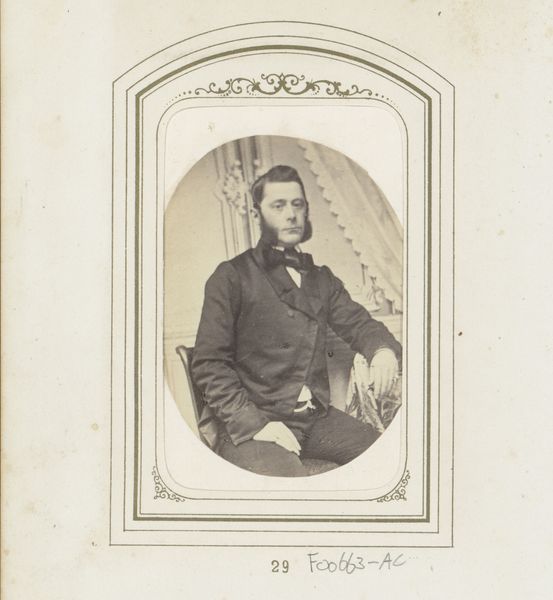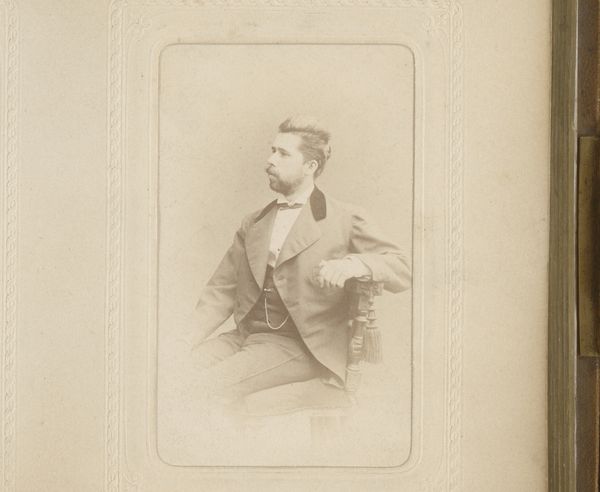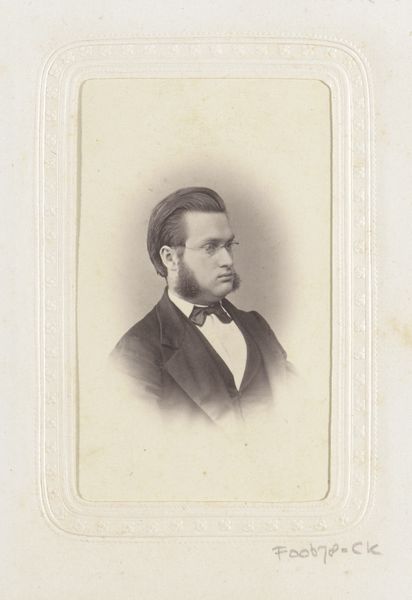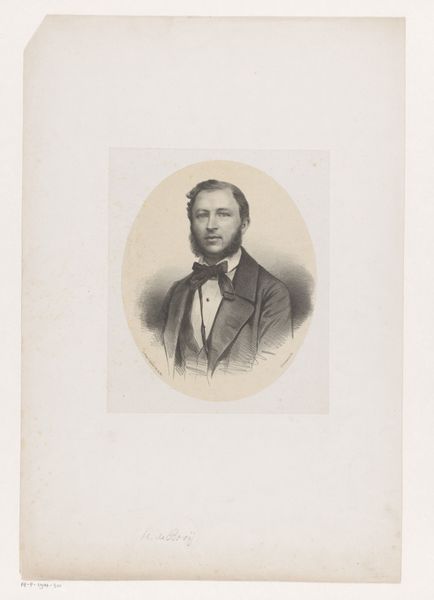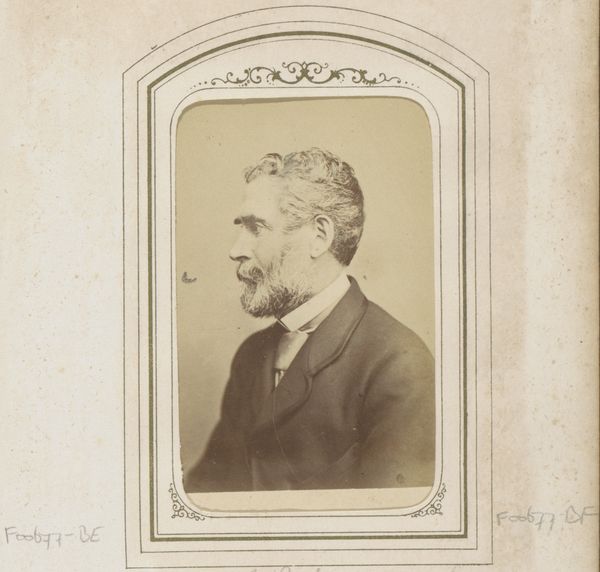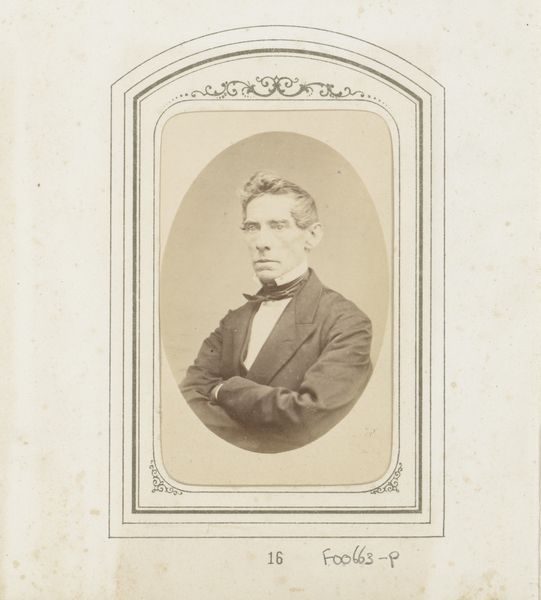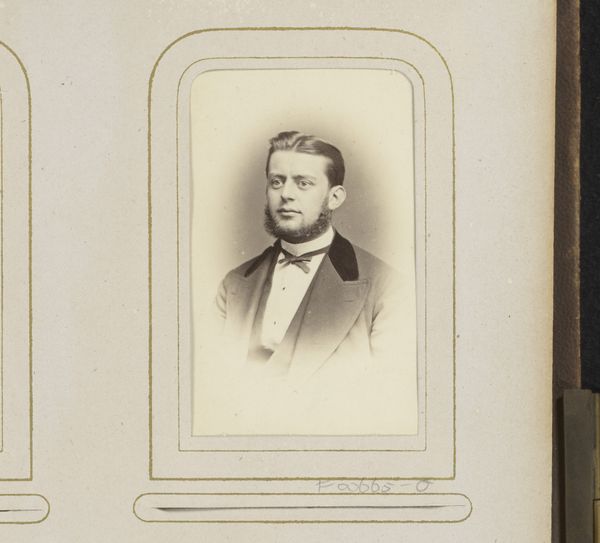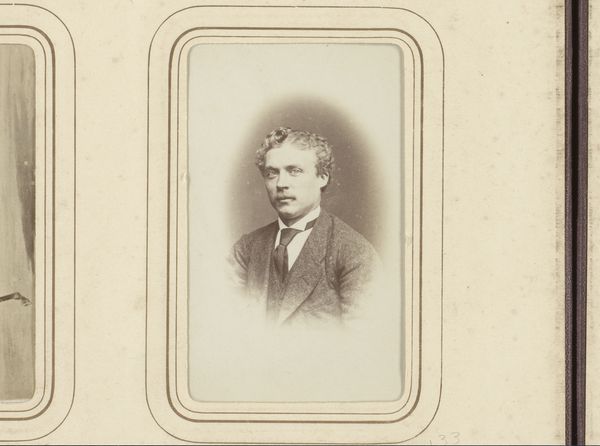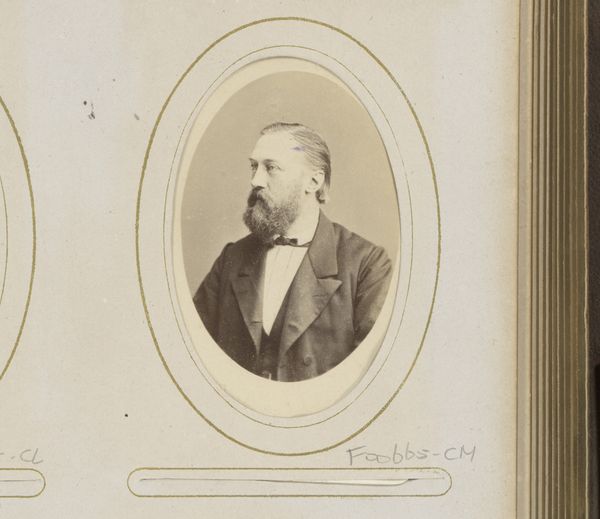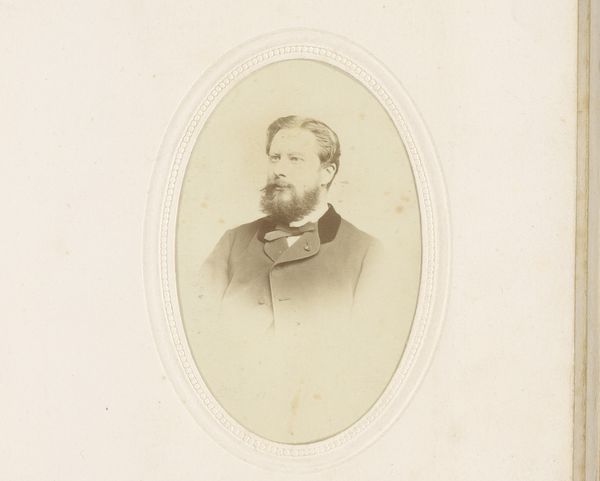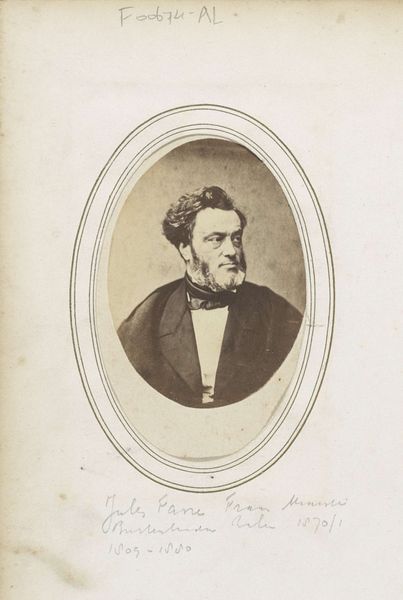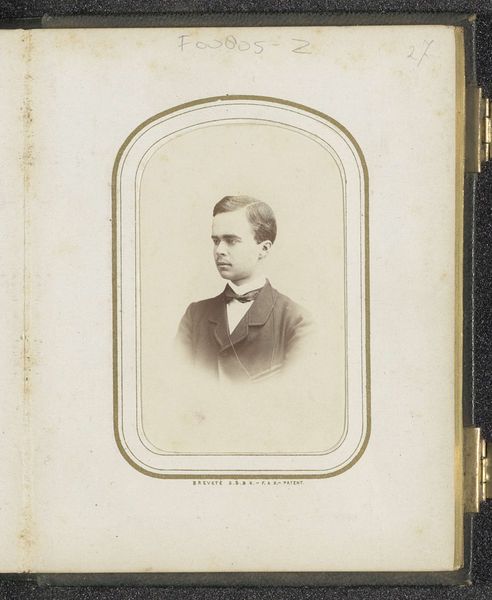
photography, gelatin-silver-print
#
portrait
#
charcoal drawing
#
photography
#
gelatin-silver-print
#
19th century
#
academic-art
#
realism
Dimensions: height 85 mm, width 53 mm
Copyright: Rijks Museum: Open Domain
This carte-de-visite, or visiting card, portraying a seated man, was made by Louis Robert Werner in the mid-19th century. Photography as a medium is deeply tied to the industrial revolution. Each print represents a moment captured through complex chemical processes, reproduced as a commodity. Early photography democratized portraiture. Once a privilege of the wealthy who could commission painted likenesses, photographic portraiture made it available to the upwardly mobile middle class. Looking closely, the textures and tones, captured through the lens and developed onto paper, speak to the artistry involved. The subject’s clothing, a suit and tie, signaled social standing and adherence to bourgeois norms. The carte-de-visite itself, easily reproduced and distributed, became a symbol of social connection. So, next time you look at a photograph, think about the layers of labor, technology, and social context embedded within its seemingly simple surface. It’s a far cry from a painting but no less rich in meaning.
Comments
No comments
Be the first to comment and join the conversation on the ultimate creative platform.
